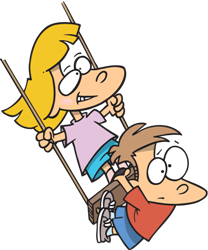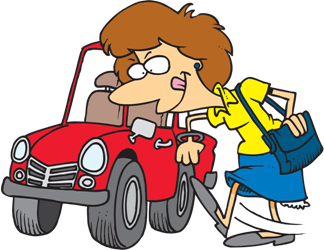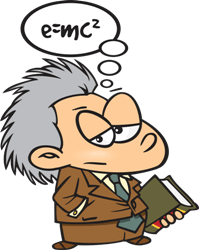Parentheses, Brackets and
Braces
Rules and Examples
 Parentheses,
brackets and braces are three punctuation marks that are used when
writing in English.
Parentheses,
brackets and braces are three punctuation marks that are used when
writing in English. Click Here for Step-by-Step Rules, Stories and Exercises to Practice All English Tenses
Parentheses ( )
Parentheses (plural)Parenthesis (singular)
Parentheses are the most common of these three punctuation marks.
Parentheses are made on a keyboard by pressing the SHIFT key + 9 or 0.
We use parentheses to enclose information that can be left out.
The information in the parentheses is not essential to the meaning of the original sentence. it is given as additional, or extra, information.
Examples:
- Sam (the boy from the school) helped me with my homework.
-
The pig ate the ice-cream cone. (His favorite flavor was chocolate.)

Sometimes the information is inserted within the original sentence and is not a complete sentence itself.
When this happens, we do not capitalize the section in parentheses or put punctuation at the end.
Examples:
- Jenny (the
girl that lives in the yellow house) invited you to her
birthday party next week.
- I am going to the park to play with Richard (who
goes to school with
me).
Sometimes the information in parentheses is a complete sentence that is separate from the original sentence.
When this happens, we treat the words in the parentheses as a complete sentence by capitalizing the first letter and adding punctuation inside the parentheses.Examples:
- The children won their baseball game. (It was
exciting!)
- I am going to the park to play with Richard. (Richard went to school with me.)

If you remove the information that is inside the parentheses, the sentence must still make sense.
Examples:- Jenny (the girl
that lives in the yellow house) invited you to her
birthday party next week.
Jenny invited you to her birthday party next week.
- I am going to the park to play with Richard (who goes
to school with
me).
I am going to the park to play with Richard.
- The children won their baseball game. (It was
exciting!)
The children won their baseball game.
- I am going to the park to play with Richard. (Richard
went to school
with me.)
I am going to the park to play with Richard.

Brackets [ ]
Brackets look squarer than parentheses. They are made on a keyboard by using the two keys to the right of the P.Brackets are placed around extra information in a text, especially comments made by an editor.
in other words, they are typically used for editorial comments, corrections, and clarifications
For example, you can use brackets to add something into a sentence that was taken out by the writer.
Original sentence:
- She drove 60 on the highway to town.
This could mean 60 miles per hour, 60 kilometers per hour or something different.
- She drove 60 [miles per hour] on the highway to town.

What the difference between parentheses and brackets?
Parentheses are used for text that is part of the original sentence but can be omitted.Examples:
- We were very happy to see them (all of them).
- For more info see chapter the "Birds" (page 5).
- I was very surprised (and it's pretty hard to surprise me!).
Brackets are typically used to explain or clarify the original text by an editor.
Example:
- She [Martha] is a great friend of us.
In this example "Martha" was not part of the original sentence, and the editor added it for clarification. - Many sheeps [ships] left the port.
In this example the original writer made a spelling mistake. So later on, when someone quoted them, they added "[ships]" for clarification. "Ships" was not part of the original sentence.
You can also use brackets in sentences where you want to put parentheses within parentheses.
The order is the following:
- Opening parenthesis
- Opening bracket
- Closing bracket
- Closing parenthesis
Example:
- The package includes several things (mainly CDs [compact discs]).
Braces { }
Braces look like curly brackets.Braces are made on a keyboard by holding the SHIFT key and using the two keys to the right of the P.
We do not use braces very often in written language. Braces are more common in mathematics and science, which are not discussed in this lesson.

These were the uses of parentheses, brackets and braces. Now that you know them, it is time to practice! Read and do exercises.
Get Updates, Special Offers, and English Resources
Download your FREE GIFT (the first two chapters of
English Short Stories Book and Workbook)
as soon as you join!

By submitting your email, you consent to receiving updates and newsletters from us and to the sharing of your personal data with third parties for the purposes of sending you communications. We will not spam you. You can unsubscribe at any time. For more information, please see our privacy policy.
Return from Parentheses, Brackets and Braces to Punctuation Marks





